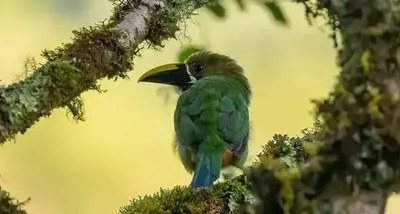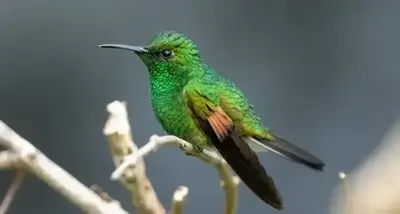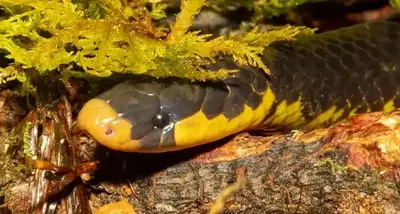Savegre Hotel & Cloud Forest Reserve
- 500+ hectares (1,235+ acres) of privately conserved cloud forest
- UNESCO Region: Located within the Savegre Biosphere Reserve
- ~35 km (22 miles) of marked hiking trails
- Day/Night access to trails
Savegre Hotel & Cloud Forest Reserve
Tucked into a hidden valley of Costa Rica’s Talamanca mountains, Savegre Hotel & Cloud Forest Reserve is a family-run ecolodge that protects over 500 hectares of pristine highland forest. Located in San Gerardo de Dota, this conservation-focused retreat offers a rare chance to explore one of the country’s most biodiverse cloud forests—home to towering oak trees, cascading rivers, and the iconic resplendent quetzal. With more than 35 km of well-maintained trails and direct access to the UNESCO-designated Savegre Biosphere Reserve, Savegre is both a premier destination for birdwatchers and a vital link in the Path of the Tapir wildlife corridor. Visitors come not only for the stunning scenery and cool mountain climate, but also to support a community that has turned forest preservation into a model of sustainable ecotourism.
About Savegre
A Legacy of Conservation in the Talamanca Highlands

What began as a remote homestead in the 1950s is now one of Costa Rica’s most celebrated ecolodges. Savegre Hotel & Cloud Forest Reserve was founded by Efraín Chacón and his family, who first settled the Savegre Valley after discovering its fertile land and untouched beauty during a hunting trip. Over the decades, the Chacóns transitioned from subsistence farming to a vision of community-based conservation and ecotourism, recognizing that protecting the forest held greater value than clearing it.
In the early 1980s, they retired their cattle operation and began actively restoring native forest, eventually setting aside over 500 hectares of cloud forest as a private reserve. Today, Savegre stands as a model of sustainable tourism, reinvesting visitor revenue into habitat protection, environmental education, and scientific research. Their efforts helped place the valley at the heart of the UNESCO Savegre Biosphere Reserve and the Path of the Tapir Biological Corridor, a regional conservation initiative connecting highland and coastal ecosystems.
Location and Environment: San Gerardo de Dota’s Cloud Forest Haven
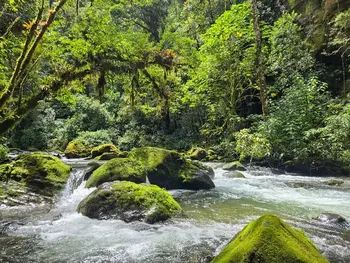
Savegre is located in San Gerardo de Dota, a secluded valley tucked beneath the Cerro de la Muerte in Costa Rica’s Talamanca Mountains. Sitting at 2,200 meters (7,200 feet) above sea level, the lodge is immersed in dense premontane and montane cloud forest, where ancient oak trees stretch skyward and mist drifts through epiphyte-laden branches. With 35 km (22 miles) of private trails, crystalline streams, and river-fed waterfalls, the reserve offers exceptional access to one of Central America's most intact montane ecosystems.
The climate is cool and humid year-round, with 3,000–4,000 mm of annual rainfall and temperatures often ranging from 5–24°C (41–75°F). These conditions support a lush, evergreen forest teeming with biodiversity—including many species found nowhere else on Earth.
Birding Savegre: In Search of the Quetzal
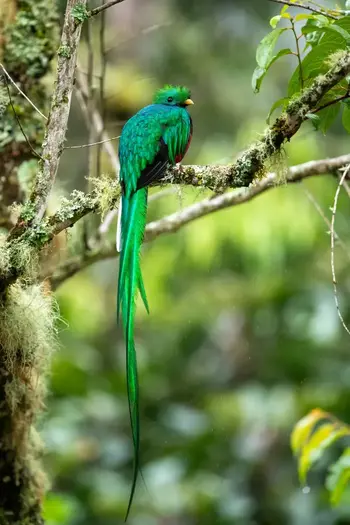
Savegre is world-renowned for birdwatching, particularly for sightings of the resplendent quetzal (Pharomachrus mocinno), one of the most iconic and breathtaking birds in the Americas. The surrounding forest harbors a healthy year-round population, and guided tours often locate active nests or feeding pairs during the breeding season (February to July). Thanks to the abundance of wild avocados (aguacatillos), the quetzals rarely leave the valley.
But Savegre’s avian riches extend far beyond quetzals. In the hotel gardens and forest canopy, guests may encounter:
- Emerald toucanet (Aulacorhynchus prasinus) – a vivid green fruit-eater often seen at mid-levels
- Collared trogon, flame-throated warbler, silver-throated tanager, and black-cheeked warbler
- Multiple hummingbird species: fiery-throated, volcano, Talamanca, and white-throated mountain-gem
- Endemics of the highlands such as the long-tailed silky-flycatcher and volcano junco
- Nocturnal species like the bare-shanked screech-owl and dusky nightjar
Whether exploring the trails or sitting on the lodge terrace with binoculars, birders are rewarded with close encounters and a symphony of cloud forest sounds.
View A Partial Checklist of Birds Recorded at Savegre →Herping Savegre: Cloud Forest Reptiles and Amphibians
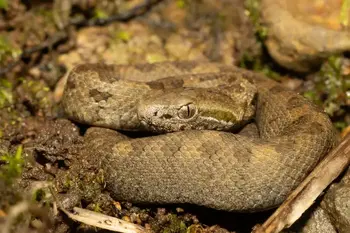
Though often overlooked by the general public, Savegre is a hidden gem for herpers—especially those willing to search patiently in cool, misty conditions. The reserve’s high elevation and intact forest create a haven for rare and endemic reptiles and amphibians, many of which are difficult to observe elsewhere.
While cool cloud forests are generally not the best place for herping considering their low species diversity and abundance, compared with the lower elevations, they do offer the rare chance to observe cloud forest endemics that simply cannot be found anywhere else. Savegre is one of the best places in Costa Rica to search for the “ghost of the forest,” the Talamancan palm pitviper (Bothriechis nubestris). This elusive viper, with its striking emerald and black pattern is a "holy-grail" species for herpers. Encountering a B. nubestris is rare, even in the most ideal places such as Savegre, but they don't call them "ghosts" for no reason. While finding this species is a long shot, herpers who are up for the challenge of searching for this highly coveted species can't ask for a better location than Savegre's pristine primary, old-growth forest.
I visited Savegre with one goal in mind: to find Bothriechis nubestris. I knew the odds were slim—after all, they don’t call it the “ghost of the forest” for nothing—but I was prepared for that reality. I didn’t find one on this trip, but I left knowing that success might take several more visits. Fortunately, Savegre offered a rewarding consolation prize: during my time exploring the trails, I encountered the following other herp species:
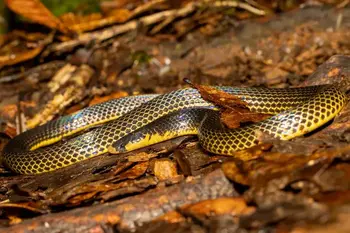
- Montane pitviper (Cerrophidion sasai) – a highland terrestrial viper often seen basking on trails.
- Godman’s earth snake (Geophis godmani) – a beautifully shiny and secretive fossorial snake found under logs or leaf litter.
- Thick graceful brown snake (Rhadinaea calligaster) – despite its name, this snake has a beautiful green color, allowing it to camoflauge amongst the mossy substrate, with a brilliant irridescent shine to its scales. Although rear-fanged, this snake is placid, extremely reluctant to bite, and a pleasure to hold and photograph.
- Various anole species, including high-elevation specialists along mossy branches and rock walls.
- Multiple rain frogs of the Craugastor genus.
Accommodations

-
 Price: $100-300 per night depending on room, demand, and deals offered. Includes full breakfast.
Price: $100-300 per night depending on room, demand, and deals offered. Includes full breakfast.
-
 Beds: 1 to 2 queen size beds per room.
Beds: 1 to 2 queen size beds per room. -
 Check In/Out: Check In: 3:00 p.m., Check Out: 12:00 noon.
Check In/Out: Check In: 3:00 p.m., Check Out: 12:00 noon. -
 Safe, guarded and gated property
Safe, guarded and gated property
-
 Outlets for Electronics.
Outlets for Electronics.
-
 Wifi. available in guest rooms, and around main buildings.
Wifi. available in guest rooms, and around main buildings.
-
 Languages Spoken: English and Spanish
Languages Spoken: English and Spanish
 Heating/Cooling: Remote-controlled mini-split heating and cooling unit in rooms.
Heating/Cooling: Remote-controlled mini-split heating and cooling unit in rooms.
-
 Meals: A full breakfast is included in the price of stay. A restaurant and bar/lounge offers a-la-carte lunch and dinner options. Entrées are available for about $12 USD and up.
Meals: A full breakfast is included in the price of stay. A restaurant and bar/lounge offers a-la-carte lunch and dinner options. Entrées are available for about $12 USD and up.
 Transportation to/from Savegre: Most overnight visitors choose to rent a car in San José and drive to Savegre. Private car transportation to/from San José is another option.
Transportation to/from Savegre: Most overnight visitors choose to rent a car in San José and drive to Savegre. Private car transportation to/from San José is another option.
 Bathroom: Private bathrooms in each room include shower (with hot water), sink, and toilet.
Bathroom: Private bathrooms in each room include shower (with hot water), sink, and toilet. Laundry: service available upon request for extra fee.
Laundry: service available upon request for extra fee.
Savegre in 360°
Click and drag your mouse on the images below to change the view perspective
360° Virtual Tour of Savegre
Trails of Savegre: Exploring the Cloud Forest on Foot
The trail system at Savegre Hotel and Cloud Forest Reserve offers visitors unparalleled access to one of Costa Rica’s most pristine cloud forest ecosystems. With over 35 km (22 miles) of trails, guests can explore a landscape that rises from the Savegre River valley at 2,200 meters (7,200 ft) to the high ridgelines near the continental divide. Much of the reserve traverses old-growth primary forest, which makes up approximately 80% of the protected area, with the remainder consisting of regenerating secondary growth that is now decades old.
Terrain and Vegetation

The primary forest is dominated by towering oak trees (Quercus costaricensis and Quercus bumelioides), some of which are centuries old and reach over 40 meters in height. These canopy giants create a shaded forest with a relatively open understory, populated by tree ferns, palms, saplings, and low-growing bamboo (Chusquea spp.). The trunks and branches are thickly draped in mosses, bromeliads, orchids, and lichens—the hallmark of a true cloud forest. Along higher ridges and frequently fog-shrouded areas, the forest takes on an ethereal quality, where visibility drops and every surface glistens with moisture.
Reaching the Primary Forest
A 1.8 km dirt road, accessible via 4WD, climbs the mountainside from the hotel to a scenic platform and trailhead parking lot. From here, visitors can access the core primary forest zone—an area cloaked in dense epiphytes and dominated by ancient trees. Many of the most rewarding trails begin at or near this point. Note: you don't need a jeep or heavy duty off road vehicle for this road. Any size 4WD rental SUV with regular road tires should be sufficient. However, 2WD is not recommended or allowed. Note that you do not need 4WD to reach the hotel and you can walk this 1.8km dirt road to reach the trails if you do not have a 4WD.
🥾 Featured Trails at Savegre
-
🌿 Canto de las Aves Trail (0.9 km)
Aptly named “Birdsong Trail,” this short loop is ideal for early morning birdwatching. It winds through mid-elevation forest and is especially good for spotting mixed flocks and hummingbirds.
-
💧 La Quebrada Trail (1.6 km)
A gentle, shaded walk that meanders through old-growth forest and alongside a picturesque stream. This trail offers a good chance to encounter frogs in the Craugastor genus and ideal habitat for the elusive and prized Bothriechis nubestris.
-
🌲 Los Pioneros Trail (0.4 km)
An easy, flat loop accessible from the top of the 4x4 road. Great for families or visitors with limited mobility who still want to experience moss-covered trees and dense vegetation up close. The signs recommend that you give barefoot hiking a try on this trail.
-
🌳 Los Robles Trail (6.2 km)
This challenging loop gives hikers the full cloud forest experience through beautifully preserved old-growth forest. It ascends through old-growth oak forest to the legendary “Millenary Oak”—a gnarled and massive tree thought to be one of the oldest in the valley—before descending along a ridge often blanketed in fog. Expect to hear the haunting calls of bare-shanked screech-owls at dusk or encounter the chatty sooty thrush along the trail.
-
⛰ Las Torres Trail (7.2 km one-way)
The most difficult and adventurous route at Savegre. This steep ascent branches off the Robles Trail and climbs to 3,451 m elevation, possibly reaching the continental divide. The trail passes through increasingly stunted cloud forest and high-elevation páramo vegetation.
-
🏞 Cascadas Trail to Providencia (~5 km)
Although outside the hotel’s property, this trail begins just below the community of San Gerardo and follows the Savegre River downhill through lush, lower montane cloud forest to Providencia and Zapotal at about 1,700 meters. As elevation drops, the forest transitions and new wildlife emerges—this is prime habitat for the side-striped palm pitviper (Bothriechis lateralis), as well as tropical tanagers and butterflies more common to the foothills.
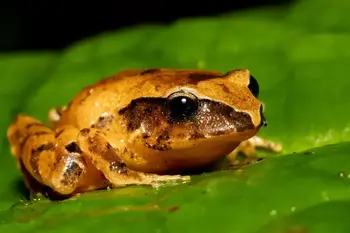
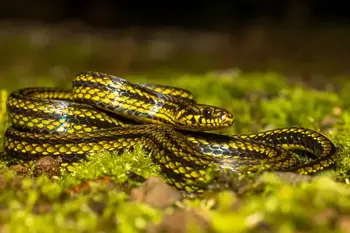
🌸 Casual Wildlife Wandering
For those who prefer gentler excursions, wildlife viewing is just as rewarding without straying far:
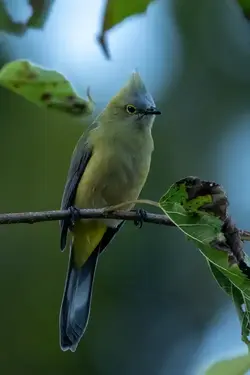
- The hotel gardens attract a dazzling array of hummingbirds, slaty flowerpiercers, yellow-thighed brushfinches, and long-tailed silky-flycatchers.
- The parking lot’s wild avocado trees often harbor resplendent quetzals and emerald toucanets feeding quietly throughout the day.
- The small apple orchard on site provides easy viewing of silver-throated tanagers, rufous-collared sparrows, and many other birds.
- The Chacón family garden is a relaxing stroll providing viewing opportunities for many of the birds that visit the property, and open areas to see the brilliantly bright green emerald swift lizards (Sceloporus malachiticus).
- A simple walk along the dirt road through San Gerardo, paralleling the river, can yield sightings of torrent tyrannulets, stripe-tailed hummingbirds, and even a basking montane pitviper (Cerrophidion sasai) taking advantage of a brief sunbreak.
Whether you're chasing birds, scanning mossy branches for snakes, or simply soaking in the misty atmosphere of the high Talamanca, the trails of Savegre offer a deeply immersive cloud forest experience—from valley stream to windswept ridge.
Tours of Savegre: Guided Birding in the Cloud Forest

While Savegre’s cloud forest trails can be explored independently, the experience is greatly enriched by joining one of the guided birdwatching tours offered through the hotel. These tours can be arranged at the reception desk and are led by experienced local naturalists—many of whom grew up in San Gerardo de Dota and know the forest and its wildlife intimately.
🌄 Morning Birding Tours
Early morning is the best time to observe bird activity in the cloud forest. Guided outings often begin just after sunrise, taking guests to fruiting trees, nesting sites, and forest edges where bird life is at its peak. Guides are highly skilled at locating elusive species such as the resplendent quetzal, which feeds on wild avocados and nests in hollow trunks between February and July. Other highlights may include emerald toucanets, collared trogons, flame-throated warblers, and a variety of hummingbirds and highland endemics.
Morning tours typically last 2 to 3 hours, and binoculars and spotting scopes may be provided or recommended.
🌙 Night Walks
Savegre also offers evening nature walks, which provide a completely different perspective on the forest. While these are not dedicated herping tours, they often yield sightings of nocturnal birds such as bare-shanked screech-owls and dusky nightjars, along with large moths, katydids, and sometimes sleeping birds perched low on branches.
Sharp-eyed participants may also spot amphibians such as Craugastor rain frogs, especially along moist stream banks and forest edges. These tours are a relaxed way to experience the magical ambiance of the cloud forest at night—when the mist settles, and the forest hums with subtle life.
🐍 Independent Herping
Although Savegre does not currently offer herping tours, experienced field herpers are welcome to explore the trails on their own. Night hiking is permitted on most of the hotel’s private trails, and the reception staff can provide guidance on safety and accessibility. The best herping opportunities occur during or after rain, especially along the La Quebrada and Los Robles trails, or near the river and forested slopes where moisture and cover are ideal.
Note: During my visit, I was informed that I was permitted to hike the trails at night but I should be back by 9 p.m., which allows for three hours of night hiking every night. However, there are no patrols that were strictly enforcing this rule. Due to the cool temperatures at this elevation, snakes are not forced to be as strictly nocturnal as they are at lower elevations. I found two snakes during the day, and one at night.
Savegre YouTube Videos Playlist
6 YouTube videos from Savegre. Press play, then press ![]() (or Shift+N) on the video player to move to next video and
(or Shift+N) on the video player to move to next video and ![]() (or Shif+P) to move back to the previous video. Click the
(or Shif+P) to move back to the previous video. Click the ![]() icon in the top right corner of the player to view list of all videos.
icon in the top right corner of the player to view list of all videos.
Travel Guide to Savegre Hotel and Cloud Forest Reserve
Most international visitors to Savegre arrive through Juan Santamaría International Airport (SJO) near San José. Most travelers choose to rent a car at or near the airport and drive to Savegre in San Gerardo de Dota. The driving route is shown in the map below. For more information on car rental in Costa Rica, you may consult the travel section in our Costa Rica travel guide.
If you are nervous about renting a car in Costa Rica (a very reasonable concern), an alternative to car rental would be to hire private car transportation. While you may be able to get a taxi from the airport to the Savegre hotel, your return trip will require advanced planning. San José has private car transportation companies, similar to limousine companies in North America, that can be hired for a ride to and from Savegre.
The road from the Pan-American Highway down to San Gerardo de Dota is narrow but fully paved, and 4WD is not required. While there are a few short unpaved stretches, a low-clearance 2WD vehicle can navigate them without issue as long as care is taken. That said, drivers should exercise extra caution: the road is winding, with numerous blind hairpin turns, and many sections are just wide enough for a single vehicle. Even where two cars can pass, space is often tight. Although traffic is typically light—San Gerardo is a dead-end valley—drivers should always expect the possibility of oncoming vehicles around any corner and proceed slowly and attentively. Always stay far to the right, in your lane, and don't be tempted to cut corners.
❓Frequently Asked Questions (FAQs) About Savegre Hotel and Cloud Forest Reserve
-
Where is Savegre Hotel located?
Savegre Hotel is located in San Gerardo de Dota, Costa Rica, about 2.5 to 3 hours southeast of San José, in the Talamanca Mountains near Cerro de la Muerte.
-
Do I need a 4WD vehicle to reach Savegre Hotel?
No. The road from the Pan-American Highway to San Gerardo is paved and accessible to 2WD vehicles, though drivers should use caution due to narrow lanes and sharp curves.
-
What types of wildlife can I see at Savegre?
Savegre is famous for birdwatching, especially the resplendent quetzal, as well as hummingbirds, tanagers, and toucanets. Herpers may encounter montane pitvipers, rain frogs, other high-elevation species, and if extremely lucky, the "ghost of the forest"...the Talamancan palm pitviper Bothriechis nubestris. Hikers who hike the waterfall trail below San Gerardo down the Savegre valley, can descend to elevations where the side striped palm pitviper (Bothriechis lateralis) is common.
-
When is the best time to see resplendent quetzals?
Quetzals are present year-round in San Gerardo, but are easiest to see from February to July during the nesting season when they are more active and predictable. The author visited in late June 2025 and had many observations of quetzals feeding on the wild avocados just outside the cabins.
-
Are guided tours available at Savegre?
Yes. The hotel offers morning birding tours and evening nature walks led by experienced local guides. Herping tours are not officially offered, but night hiking is allowed on the reserve’s trails.
-
How many trails does the Savegre reserve have?
The reserve includes over 35 km (22 miles) of hiking trails, ranging from easy forest loops to challenging ascents near the continental divide.
-
What amenities are included in the rooms?
Rooms feature private bathrooms, electric heating, and wall-mounted climate control units with heating, cooling, and drying modes. Wi-Fi is available in most areas.
-
Is Savegre suitable for families or non-hikers?
Yes. In addition to challenging hikes, there are easy trails, beautiful gardens, and opportunities for casual birdwatching and cultural experiences, making it ideal for a wide range of visitors. The author made most of his total bird sightings, including quetzals and toucanets, just outside of the cabin. The dird road through San Gerardo parallels the river and provides great opportunities for bird watching. Horseback rides can also be arranged.
-
What elevation is Savegre located?
The hotel sits at approximately 2,200 meters (7,200 feet) above sea level, with trails ascending to over 3,400 meters on the most challenging routes.
-
Does Savegre support conservation and sustainability?
Absolutely. Savegre protects 500+ hectares of cloud forest, uses hydroelectric and composting systems, and is a certified member of Costa Rica’s sustainable tourism program (CST Level 4).
